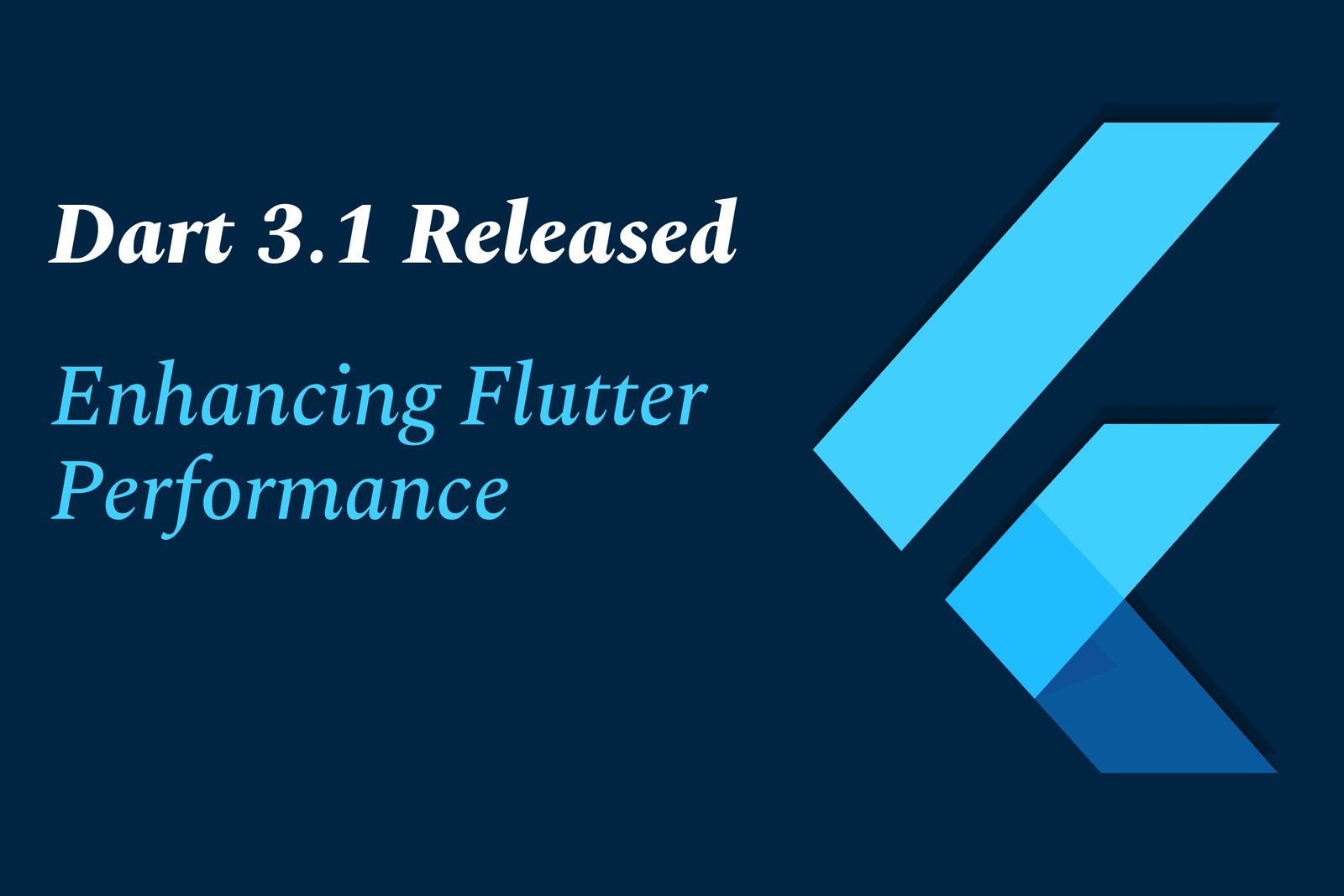Dart 3.1 Released: Enhancing Flutter Performance
Dart 3.1, released alongside Flutter 3.13, enhances Flutter performance with faster rendering via the new Impeller engine, improved support for foldable devices, upgraded text input features, and better tooling—boosting app speed, visuals, and developer experience.
Dart 3.1 Released: Enhancing Flutter Performance
1 ) Introduction to Dart 3.1 and Flutter Enhancements
Dart 3.1 accompanies the Flutter 3.13 update and brings several performance improvements for Flutter app development.
The release focuses on better rendering, engine upgrades, new features for foldable devices, and improved developer experience.
2 ) Engine and Renderer Improvements
Introduction of the Impeller renderer optimized for iOS; it halves frame rasterization time leading to smoother animations and better responsiveness.
Impeller preview is now extended to macOS, offering consistent high quality visuals across Apple devices.
Ongoing Vulkan backend development for Android with backend agnostic Hardware Abstraction Layer (HAL) optimizations promising smoother performance.
Support for foldable devices through a new engine API exposes display properties, enabling tailored UI experiences in emerging form factors.
3 ) Framework Upgrades
Enhanced TextField includes camera based character recognition on iOS, facilitating innovative input methods.
Various Material Design enhancements, including advanced dialog features and upgraded Cupertino widgets for iOS.
Improved scrolling capabilities that enhance user interaction dynamics and accessibility improvements like refined CupertinoSwitch properties.
4 ) Platform and Tooling Advancements
Flutter 3.13 adds support for Android 14 and further refines iOS related functionalities.
DevTools receives significant usability and performance improvements, helping developers diagnose and optimize smoothly.
Expansion of game development toolkits within Flutter further supports game creators with additional resources.
5 ) Summary
Dart 3.1 strengthens Flutter’s foundation by boosting engine performance and rendering efficiency while introducing APIs to handle modern hardware like foldables.
This update, paired with Flutter 3.13, highlights Google’s dedication to delivering fast, visually rich, and adaptable apps across platforms.
Developers benefit from improved tools, enhanced widgets, and platform support, making app creation more efficient and future proof.
https://justacademy.in/news-detail/ai-in-flutter:-smarter-ux-and-features
https://justacademy.in/news-detail/what’s-deprecated-in-flutter-2025
https://justacademy.in/news-detail/flutter-web-is-now-production-ready:-key-announcements
https://justacademy.in/news-detail/how-flutter-is-dominating-cross-platform-app-development
https://justacademy.in/news-detail/flutter-ai-chatbot-integration-guide
Related Posts
In 2025, top Angular libraries offer modern, feature-rich components and tools for building dynamic web apps. From powerful data grids to low-code platforms like UI Bakery, these libraries enhance development speed, UI design, and scalability, making them essential for Angular developers.
Migrating from AngularJS to Angular 17 involves gradually upgrading your app by running both frameworks together using tools like ngUpgrade, rewriting components in TypeScript, and adopting Angular’s modern architecture to enhance performance, maintainability, and long-term support.
Angular state management tools help organize and handle app data efficiently, improving scalability and maintainability. Popular options include NgRx for robust, RxJS-based patterns, and newer Signal Store solutions that offer simpler, reactive approaches integrated tightly with Angular’s latest features.
RxJS in Angular empowers developers to manage asynchronous data streams with powerful operators like `forkJoin`, `combineLatest`, and `zip`. Mastering these key operators in 2025 is essential for building efficient, reactive applications that handle complex event sequences seamlessly.
Angular performance optimization in 2025 focuses on improving app speed and responsiveness by using techniques like OnPush change detection, lazy loading, efficient data caching, and AOT compilation. These practices reduce load times, enhance user experience, and ensure scalable, fast Angular applications.
In 2025, Angular remains preferred for large-scale, enterprise apps with its robust, all-in-one framework, while Vue attracts developers seeking simplicity and fast development for smaller projects. Both frameworks excel, with choice driven by project needs and team expertise.
Angular Signals are a new reactive primitive in Angular 16 that enable fine-grained, efficient change detection by automatically tracking dependencies and updating only affected parts of the UI. They simplify state management and boost app performance, revolutionizing Angular's reactivity model.
Angular interview questions to prepare in 2025 focus on core concepts like components, directives, data binding, routing, and dependency injection, along with TypeScript mastery and latest Angular features to ensure strong practical knowledge for building scalable, efficient web applications.
AngularJS reached its official end of support in January 2022, meaning no further updates or security patches. To ensure app security and performance, developers should consider migrating to modern Angular versions or seek third-party long-term support options if immediate migration isn’t possible.
The Angular Roadmap 2025 highlights upcoming features focused on improving developer experience and performance, including zoneless Angular, Signals integration, enhanced Forms, async data handling, improved HMR, and expanded Angular Material/CDK enhancements, driving modern, efficient web app development.










